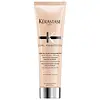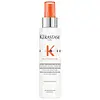What's inside
What's inside
 Key Ingredients
Key Ingredients

 Benefits
Benefits

 Concerns
Concerns

 Ingredients Side-by-side
Ingredients Side-by-side

Water
Skin ConditioningGlycerin
HumectantCetearyl Alcohol
EmollientHelianthus Annuus Seed Oil
EmollientHydroxypropyl Guar
Emulsion StabilisingStearamidopropyl Dimethylamine
EmulsifyingCetyl Esters
EmollientCaprylyl Glycol
EmollientGlyceryl Stearate
EmollientSalicylic Acid
MaskingBenzyl Salicylate
PerfumingLinalool
PerfumingBenzyl Alcohol
PerfumingTartaric Acid
BufferingMel Extract
Moisturising2-Oleamido-1,3-Octadecanediol
Skin ConditioningCitric Acid
BufferingParfum
MaskingWater, Glycerin, Cetearyl Alcohol, Helianthus Annuus Seed Oil, Hydroxypropyl Guar, Stearamidopropyl Dimethylamine, Cetyl Esters, Caprylyl Glycol, Glyceryl Stearate, Salicylic Acid, Benzyl Salicylate, Linalool, Benzyl Alcohol, Tartaric Acid, Mel Extract, 2-Oleamido-1,3-Octadecanediol, Citric Acid, Parfum
Water
Skin ConditioningNiacinamide
SmoothingPolyquaternium-37
Propylene Glycol Dicaprylate/Dicaprate
EmollientCitric Acid
BufferingPolysorbate 20
EmulsifyingQuaternium-87
CleansingStearyl Alcohol
EmollientGlycine Soja Oil
EmollientSodium Benzoate
MaskingCaprylyl Glycol
EmollientBehentrimonium Chloride
PreservativePPG-1 Trideceth-6
Skin ConditioningPanthenol
Skin ConditioningAscorbyl Glucoside
AntioxidantButylene Glycol
HumectantCandelilla Cera
EmollientPropylene Glycol
HumectantLinalool
PerfumingHydroxycitronellal
PerfumingIsopropyl Alcohol
SolventSorbitan Oleate
EmulsifyingBenzyl Salicylate
PerfumingBenzyl Alcohol
PerfumingHexyl Cinnamal
PerfumingPolyquaternium-11
Citronellol
PerfumingHydrolyzed Wheat Protein
Skin ConditioningAlpha-Isomethyl Ionone
PerfumingCoumarin
PerfumingHydrolyzed Corn Protein
Skin ConditioningHydrolyzed Soy Protein
HumectantLimonene
PerfumingIris Florentina Root Extract
MaskingPhenoxyethanol
PreservativeParfum
MaskingWater, Niacinamide, Polyquaternium-37, Propylene Glycol Dicaprylate/Dicaprate, Citric Acid, Polysorbate 20, Quaternium-87, Stearyl Alcohol, Glycine Soja Oil, Sodium Benzoate, Caprylyl Glycol, Behentrimonium Chloride, PPG-1 Trideceth-6, Panthenol, Ascorbyl Glucoside, Butylene Glycol, Candelilla Cera, Propylene Glycol, Linalool, Hydroxycitronellal, Isopropyl Alcohol, Sorbitan Oleate, Benzyl Salicylate, Benzyl Alcohol, Hexyl Cinnamal, Polyquaternium-11, Citronellol, Hydrolyzed Wheat Protein, Alpha-Isomethyl Ionone, Coumarin, Hydrolyzed Corn Protein, Hydrolyzed Soy Protein, Limonene, Iris Florentina Root Extract, Phenoxyethanol, Parfum
 Reviews
Reviews

Ingredients Explained
These ingredients are found in both products.
Ingredients higher up in an ingredient list are typically present in a larger amount.
Benzyl Alcohol is most commonly used as a preservative. It also has a subtle, sweet smell. Small amounts of Benzyl Alcohol is not irritating and safe to use in skincare products. Most Benzyl Alcohol is derived from fruits such as apricots.
Benzyl Alcohol has both antibacterial and antioxidant properties. These properties help lengthen the shelf life of products. Benzyl Alcohol is a solvent and helps dissolve other ingredients. It can also improve the texture and spreadability.
Alcohol comes in many different forms. Different types of alcohol will have different effects on skin. This ingredient is an astringent alcohol.
Using high concentrations of these alcohols are drying on the skin. They may strip away your skin's natural oils and even damage your skin barrier. Astringent alcohols may also irritate skin.
Other types of astringent alcohols include:
According to the National Rosacea Society based in the US, you should be mindful of products with these alcohols in the top half of ingredients.
Any type of sanitizing product will have high amounts of alcohol to help kill bacteria and viruses.
Learn more about Benzyl AlcoholBenzyl Salicylate is a solvent and fragrance additive. It is an ester of benzyl alcohol and salicylic acid. This ingredient can be naturally found in some plants and plant extracts.
In fragrances, Benzyl Salicylate may be a solvent or a fragrance component. In synthetic musk scents, it is used as a solvent. For floral fragrances such as lilac and jasmine, it is used as a fragrance component. The natural scent of Benzyl Salicylate is described as "lightly-sweet, slightly balsamic".
While Benzyl Salicylate has been associated with contact dermatitis and allergies, emerging studies show it may not be caused by this ingredient alone.
However, this ingredient is often used with fragrances and other components that may cause allergies. It is still listed as a known allergen in the EU. We recommend speaking with a professional if you have concerns.
Another study from 2021 shows Benzyl Salicylate may have anti-inflammatory properties.
Learn more about Benzyl SalicylateCaprylyl Glycol is a humectant and emollient, meaning it attracts and preserves moisture.
It is a common ingredient in many products, especially those designed to hydrate skin. The primary benefits are retaining moisture, skin softening, and promoting a healthy skin barrier.
Though Caprylyl Glycol is an alcohol derived from fatty acids, it is not the kind that can dry out skin.
This ingredient is also used as a preservative to extend the life of products. It has slight antimicrobial properties.
Learn more about Caprylyl GlycolCitric Acid is an alpha hydroxy acid (AHA) naturally found in citrus fruits like oranges, lemons, and limes.
Like other AHAs, citric acid can exfoliate skin by breaking down the bonds that hold dead skin cells together. This helps reveal smoother and brighter skin underneath.
However, this exfoliating effect only happens at high concentrations (20%) which can be hard to find in cosmetic products.
Due to this, citric acid is usually included in small amounts as a pH adjuster. This helps keep products slightly more acidic and compatible with skin's natural pH.
In skincare formulas, citric acid can:
While it can provide some skin benefits, research shows lactic acid and glycolic acid are generally more effective and less irritating exfoliants.
Most citric acid used in skincare today is made by fermenting sugars (usually from molasses). This synthetic version is identical to the natural citrus form but easier to stabilize and use in formulations.
Read more about some other popular AHA's here:
Learn more about Citric AcidLinalool is a fragrance and helps add scent to products. It's derived from common plants such as cinnamon, mint, citrus, and lavender.
Like Limonene, this ingredient oxidizes when exposed to air. Oxidized linalool can cause allergies and skin sensitivity.
This ingredient has a scent that is floral, spicy tropical, and citrus-like.
Learn more about LinaloolParfum is a catch-all term for an ingredient or more that is used to give a scent to products.
Also called "fragrance", this ingredient can be a blend of hundreds of chemicals or plant oils. This means every product with "fragrance" or "parfum" in the ingredients list is a different mixture.
For instance, Habanolide is a proprietary trade name for a specific aroma chemical. When used as a fragrance ingredient in cosmetics, most aroma chemicals fall under the broad labeling category of “FRAGRANCE” or “PARFUM” according to EU and US regulations.
The term 'parfum' or 'fragrance' is not regulated in many countries. In many cases, it is up to the brand to define this term.
For instance, many brands choose to label themselves as "fragrance-free" because they are not using synthetic fragrances. However, their products may still contain ingredients such as essential oils that are considered a fragrance by INCI standards.
One example is Calendula flower extract. Calendula is an essential oil that still imparts a scent or 'fragrance'.
Depending on the blend, the ingredients in the mixture can cause allergies and sensitivities on the skin. Some ingredients that are known EU allergens include linalool and citronellol.
Parfum can also be used to mask or cover an unpleasant scent.
The bottom line is: not all fragrances/parfum/ingredients are created equally. If you are worried about fragrances, we recommend taking a closer look at an ingredient. And of course, we always recommend speaking with a professional.
Learn more about ParfumWater. It's the most common cosmetic ingredient of all. You'll usually see it at the top of ingredient lists, meaning that it makes up the largest part of the product.
So why is it so popular? Water most often acts as a solvent - this means that it helps dissolve other ingredients into the formulation.
You'll also recognize water as that liquid we all need to stay alive. If you see this, drink a glass of water. Stay hydrated!
Learn more about Water